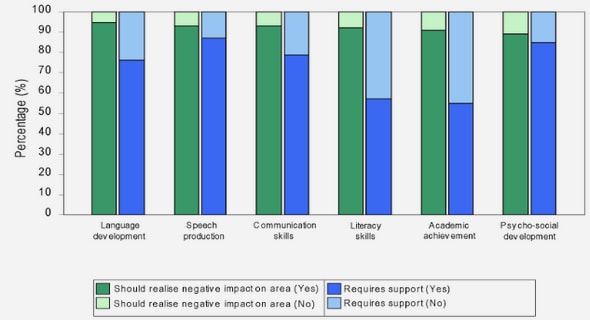Get Complete Project Material File(s) Now! »
Oral tradition in Yorùbá Society
In Yorùbá society, like in other African societies, oral tradition refers to inherited expressions connected with people, animals, trees and plants, river, hills, darkness, light, supernatural forces, individual and communal experiences, gods and goddesses, occupations and relationships. It also connects with feelings, such as love, pleasure, hatred. Besides, oral tradition contains communication relating to politics, heroes, justice, oppression, wealth, poverty, inspiration, morality, philosophy, calculation, pharmacology, entertainment, magic, physical appearance, religion, divination, and discovery. It also relates to dance, drumming, war or fighting, history, knowledge, arts, science, technology, land, air, visible objects, invisible objects, contract, negotiation, and other aspects of human beings and their environment.
Rationale
This study argues that the use of only social struggle, themes or language to classify the Yorùbá movies is inadequate because classification according to social struggle, themes and language is applicable to the movies of all people world-wide. For example, love and crime are in the movies of all nations and people, and such classification can be predominant and be used to recognize a movie, but the parameter does not actually distinguish the movies of a group of people or ethnic nation from another. To create a unique parameter that can withstand the test of time, this research draws attention to the traditional communication which, in this study, is known as Yorùbá tradition. With the detection of oral tradition devices or elements in the selected Yorùbá movies that are recently produced, the Yorùbá’s peculiar ways of communicating their worldviews, thoughts, feelings, and messages become distinct. Their peculiar language aesthetics and belief system aid their communication in the form of oral tradition
Sociological approach or social perspective
Another concept which is used in this study is “sociological approach” or “social perspective. » Both are used synonymously. In the context of this study, each refers to the sociology of the Yorùbá native speakers, particularly their socialization, ethics, axioms, social expectations, checks and balances, and communal and individual situational needs or exigencies informed by the Yorùbá settings, experience, and world views. It is used as the approach to the analysis of verbal interactions in Yorùbá movies. Also, it is used as a tool for analysing the Yorùbá oratory acts or traditional rhetoric exposing the feelings and messages in a way that brings to the fore the Yorùbá traditional ideas or values.
A brief theoretical framework
This study uses the Yorùbá ideas of oral tradition and borrows some information from Western culture and sociological approaches. The conflation is necessary since the Yorùbá world view cannot be studied without Yorùbá parameters. The need to consider African factors and questions to ask while one is researching frican movies is captured by Mhando (2008): “What I propose as an frican approach to African cinema is that we need to make an attempt at looking at the ambiguities that are inscribed in the language of cinema as it relates to frica … Is this a film about Africa, is this Africa specific or general, we should ask? [sic]. Is there a context around identity?” Besides Mhando, Stefanson (2010:10) states that “Ethnicity is one strong criterion of continuity in the making of identity.” In a simple language, ethnic peculiarities are criteria that can help a researcher to understand the features of any ethnic-connected movies.
Causes and role of technology in video production (1990’s– date)
Since the celluloid technology, as previously mentioned in this study, gave way to home-video production technology, the necessity and the role of this new dimension deserve this researcher’s attention; it is necessary to delve into the development or reasons that prompted and sustained the use of video recording in Nigeria. According to Owens-Ibie (1998), “a mixture of factors caused a shift to video.” This communication scholar identifies distressed economy, unrestricted importation of video films before economic downturn, the need to repudiate Nigerian cultural values (cheap way to so), the need to make money, and an avenue for comparison. Of all the factors, he considers the economic aspect as a major prompter. About the poor economic problem (economic restrictions or strict financial regulation) in Nigeria, he explains that when film producers could no longer afford the exorbitant production cost of their movies in foreign countries, they (producers) found solace in video technology which was simple and cheaper to acquire and use for making movies.
Definition of culture
In this study, the word “culture” is synonymous to “tradition” or “oral tradition.” The world has different cultures, representing different ethnic people and their world views. Consequently, different scholars and writers have expressed their ideas of what “culture” means or should be. Some base their definitions or views on other writers’ ideas, and others use their local knowledge to find a definition for the term and combine their local experiences with the ideas from other people. In a nutshell, as Edgar and Sedgwick (2002:1) note, the term has no single definition. Agreeing to the submission of Edgar and Sedgwick, this researcher will borrow some definitions and give some personal thoughts on them. The purpose is threefold: to present a clear view of culture generally, to premise oral tradition within the context of culture, and to lay the foundation for literature review on oral tradition. Now is the time to look at few definitions or ideas.
TABLE OF CONTENTS :
- Declaration
- Acknowledgement
- Dedication
- Summary
- Key terms
- CHAPTER 1: INTRODUCTION
- 1.1 Background
- 1.2 Oral tradition in Yorùbá Society
- 1.3 Statement of the problem
- 1.4 Aim and objectives of the study
- 1.5 Research Questions
- 1.6 Significance of the study
- 1.7 Rationale
- 1.8 Definition and/or explanation of terms
- 1.8.1 Culture
- 1.8.2 Oral
- 1.8.3 Oral tradition
- 1.8.4 Sociological approach or social perspective
- 1.8.5 Culture theory
- 1.8.6 Yorùbá movies
- 1.8.7 Nigerian movies
- 1.9 Brief theoretical framework
- 1.10 Scope and outline of the study
- 1.11 Delimitation
- 1.12 Conclusion
- CHAPTER 2: LITERATURE REVIEW
- 2.1 Introduction
- 2.2 History of Yorùbá movies within the context of Nigeria
- 2.2.1 Beginning
- 2.2.2 Movie production and marketing (1903-1960)
- 2.2.3 Post-colonial movie production and marketing (October 1, 1960-date)
- 2.3 Yorùbá movies in particular
- 2.4 Religious Impact
- 2.5 Causes and role of technology in vid (1990’ – date
- 2.6 Definition of culture
- 2.7 Oral tradition ideologies
- 2.8 Conclusion
- CHAPTER 3: THEORETICAL FRAMEWORK AND RESEARCH METHODOLOGY
- 3.1 Introduction
- 3.2 Theoretical framework
- 3.2.1 Culture theory
- 3.2.2 Culture theory and sociological connection
- 3.2.3 Oral tradition paradigm
- 3.3 Research methods
- 3.3.1 Data collection
- 3.3.2 Selected movies
- 3.4 Conclusion
- CHAPTER 4: DATA PRESENTATION AND ANALYSIS
- 4.1 Introduction
- 4.2 Questionnaire, Tables and Charts in Research
- 4.3 Relevance of questionnaire in this study
- 4.4 Demographic aspects
- 4.4.1 Gender
- 4.4.2 Age range
- 4.4.3 Locations
- 4.4.4 Ethnic groups by population
- 4.5 Questions and responses
- CHAPTER 5: DISCUSSION
- 5.1Introduction
- 5.2 Genres of oral tradition in selected Yorùbá movies
- 5.3 Harmony between oral tradition which expresses feelings and actions, events, places, actors and actresses, and themes in the Yorùbá movies
- 5.4 Impact of Oral tradition as shown in Yorùbá movies
- 5.5 Oral tradition as a salient feature of modern Yorùbá movies
- 5.6 Oral tradition as a marker of the identity of Yorùbá movies
- 5.7 Different genres of oral tradition in Yorùbá movies
- 5.8 Emotions invoked in oral traditions in Yorùbá movies
- 5.8.1 Oral tradition as a transmitter of the feelings of actors and actresses in Yorùbá movies
- 5.8.2 Link between feelings and social, physical, and spiritual aspects in Yorùbá movies
- 5.9 Messages conveyed by oral tradition in Yorùbá movies
- 5.10 Oral tradition in Yoruba movies adapting to modern issues
- 5.11 Consolidation
- 5.12 Conclusion
- CHAPTER 6: RECOMMENDATIONS AND FINAL TONE
- 6.1 Introduction
- 6.2 Research findings
- 6.3 Recommendations
- 6.5 Final tone
- REFERENCES
- APPENDIX (QUESTIONNAIRE)
GET THE COMPLETE PROJECT
THE STUDY OF ORAL TRADITION IN YORÙBÁ MOVIES

